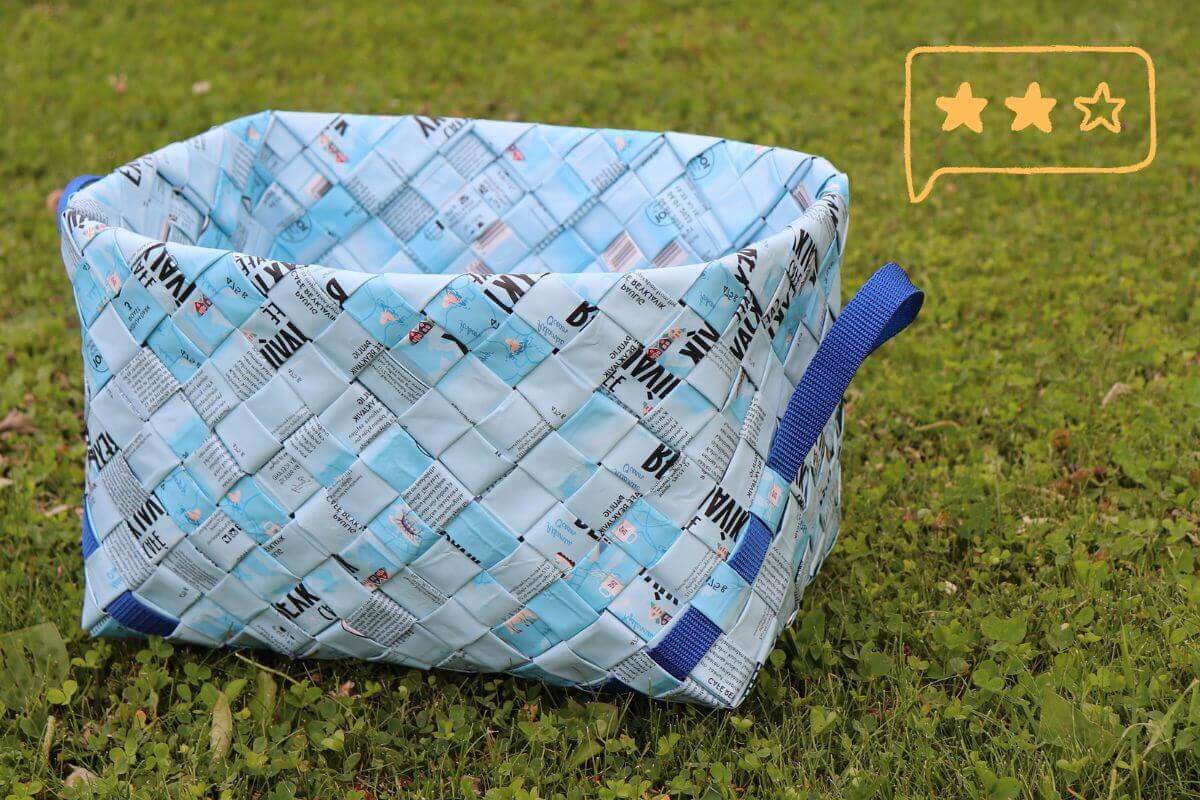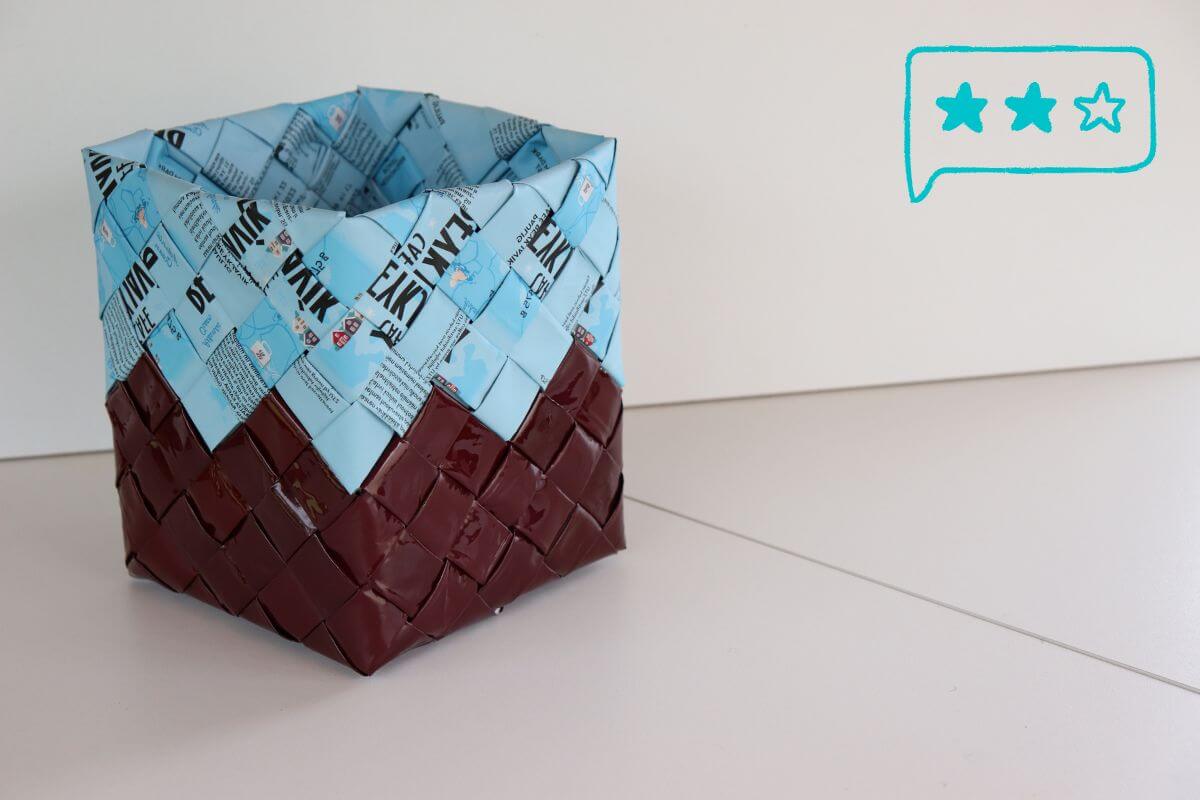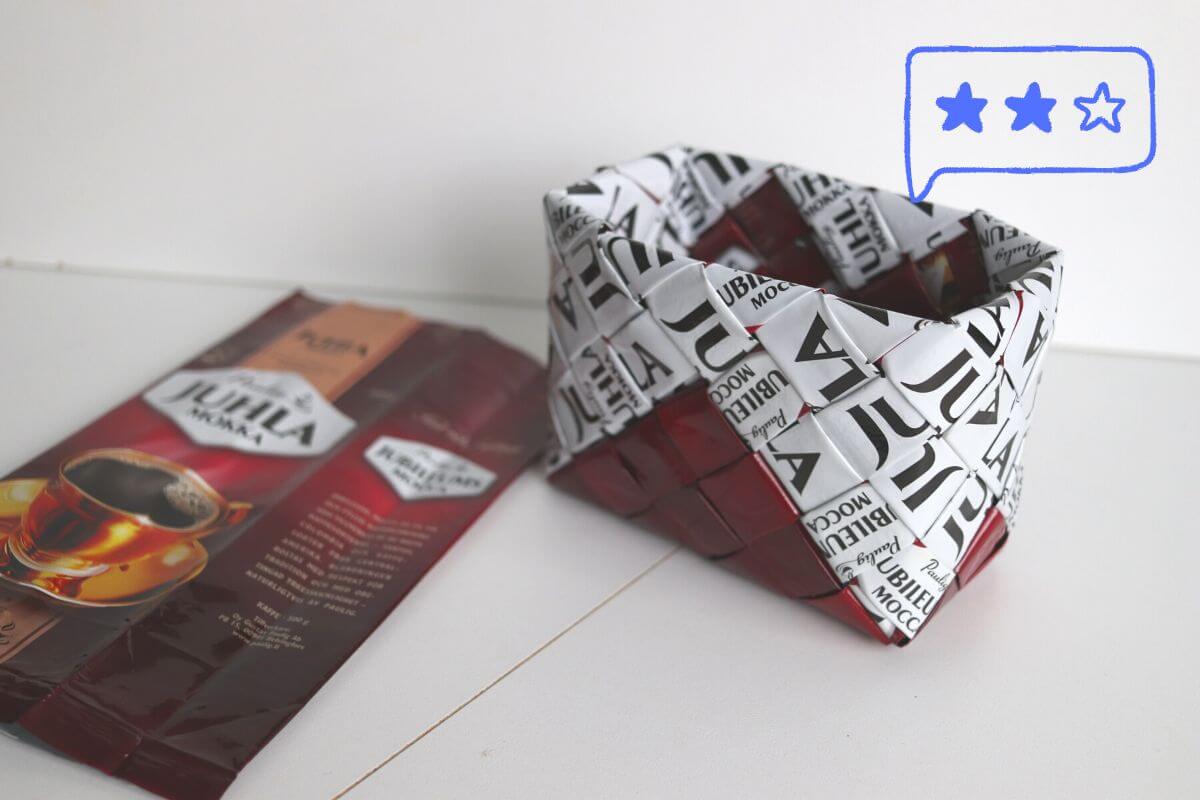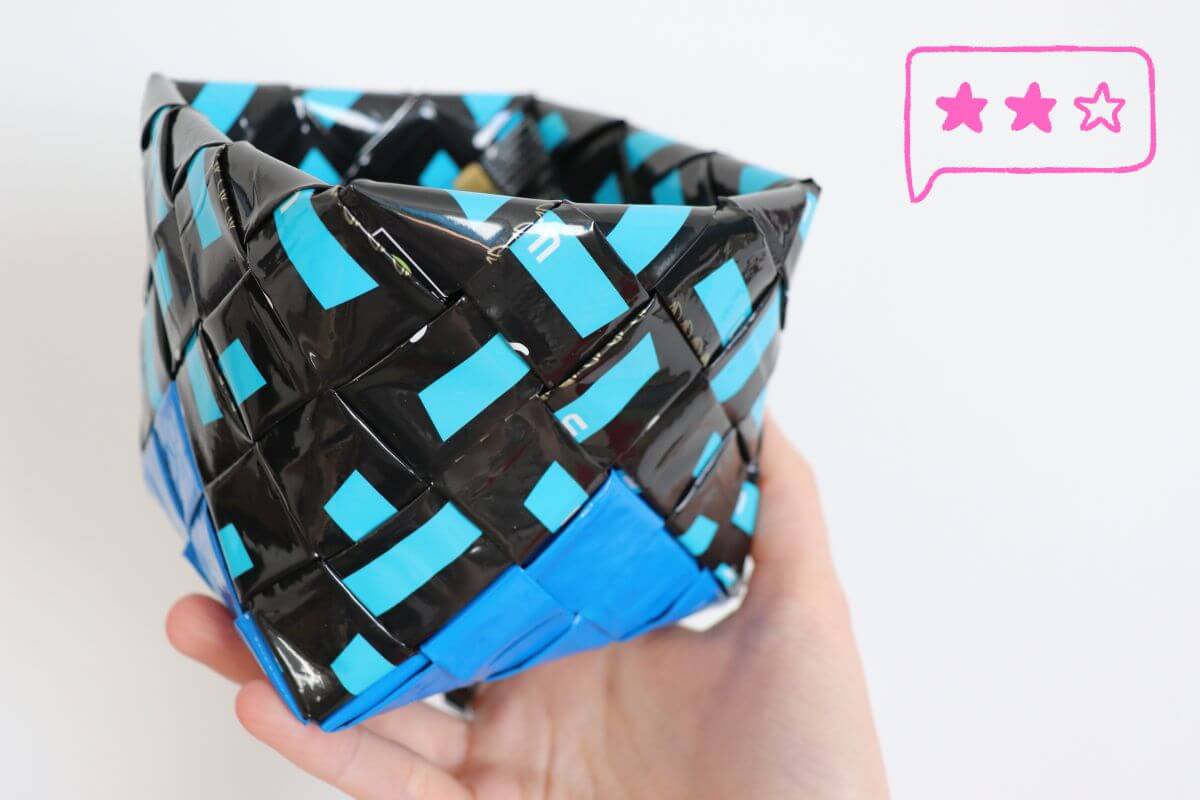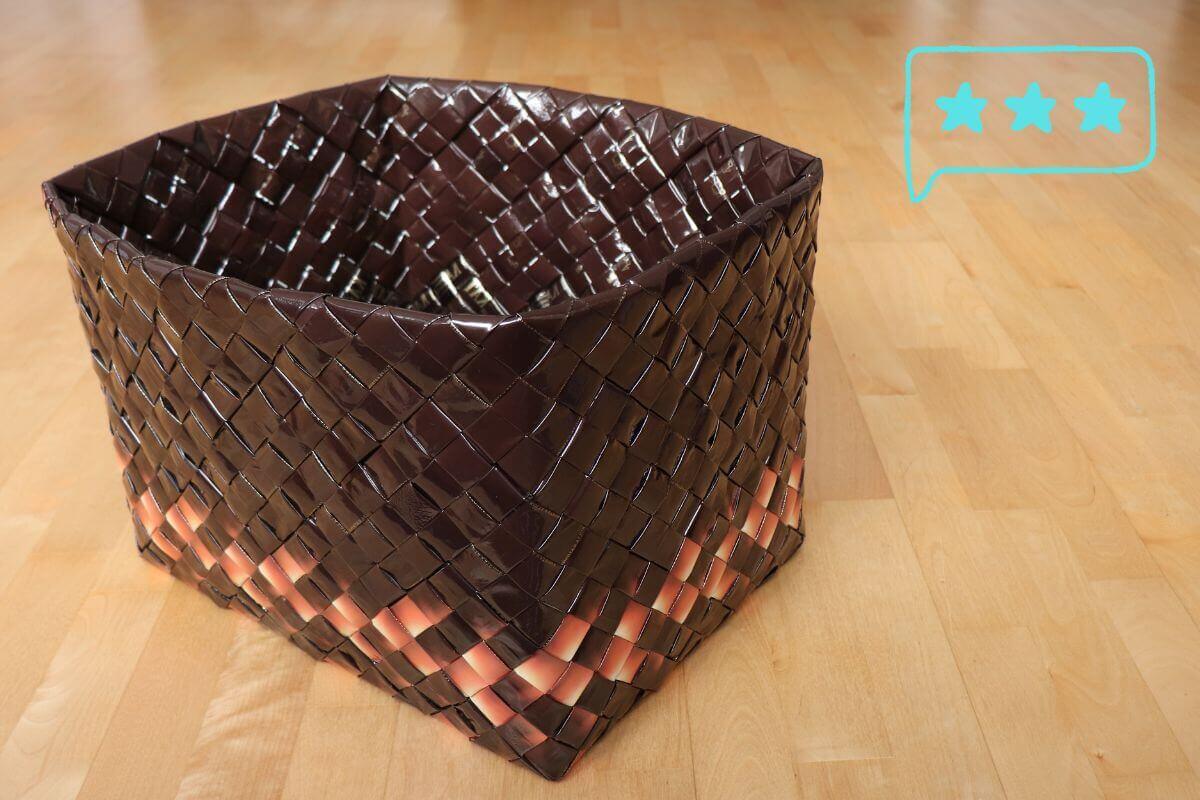ZIG ZAG WEAVING
Various surfaces, such as a zigzag pattern, can be made by applying a square weaving technique. In this example, the zig zag pattern is woven with three parallel strips, but there are other applications. The weaving begins in the same way as in a triangle by weaving half of the strips on the square into one corner. The weaving is continued by always adding three new strips, forming corners in a zig zag shape. Finally, the remaining ends of the strips can be joined into a ring.
You can view all zigzag weaving videos from ruutupunontaa YouTube channel on the embedded video playlist below.
Zig zag layers can also be extended into different level formations. This forms the bases of the baskets, for example. Here are a few examples of 15 cm wide coffee bags from the bottoms of zig zag woven baskets. For coffee bags of different sizes, calculate the dimensions by calculating: (size shown in the picture) / 15cm x (coffee bag width). The height of the basket is determined by the number of layers of woven zig zags.
Zigzag weaving can be applied by dividing the six strips of the previous model, for example, instead of three and three strips into clusters of two and four strips, so that the zigzag becomes an asymmetrical piece. This slightly complicates the usability and combinability of zigzag with other weaving techniques, but especially for weaving small baskets, this can provide new opportunities.
Zigzag weaving can also be applied to a weaving technique in which pieces with zigzag edges are formed in the same way, but the zigzag strands are aligned in the piece, unlike in zigzag. With this technique, the bottom of the basket must be formed using different weaving techniques, because the weaving direction in the piece cannot be reversed in the same way as in zigzag. In the video below you can see the basic idea of this app.
In zig zag weaving, the pattern is designed in the same way as in square weaving. The only difference is the placement of the patterns in the zig zag formation instead of the squares. In zig zag weaving, fun patterns can also be made by weaving zig zag layers from coffee bags of different colors or from strips cut at different parts in the same coffee bags.
The woven zig zag pieces are joined in the same way as the woven squares by threading a ribbon from the hinges and finishing the seams. More detailed instructions can be found in the association instructions for the squares. In zig zag weave, the upper edge of the basket is serrated. It can be finished by threading the string into the edge hinges. Astraight edge can be obtained by turning the corners inside or outside the basket and sewing them from the hinges to the woven structure of the basket. Examples of straight edge can be found on the blog.













